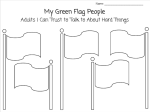 My sexual abuse prevention unit for second grade consists of three lessons, which revisit and build upon the skills and concepts covered in first grade. For these lessons you will need the books Scoop by Julia Cook and I Said No! A Kid to Kid Guide to Keeping Private Parts Private by Zack and Kimberly King, as well as scenarios from Teaching Kids How to Tell About Sexual Abuse and some coloring pages (linked below.) It will be helpful for you to familiarize yourself with the foundational information about how to teach sexual abuse prevention by reading the posts Teaching Kids How to Tell About Sexual Abuse and Teaching Kids to Recognize Grooming before you teach the lessons. You can link to all my posts about sexual abuse prevention lessons and resources by visiting A Collection of Sexual Abuse Prevention Resources. The objectives and ASCA National Standards addressed in this unit are listed at the end of the post.
My sexual abuse prevention unit for second grade consists of three lessons, which revisit and build upon the skills and concepts covered in first grade. For these lessons you will need the books Scoop by Julia Cook and I Said No! A Kid to Kid Guide to Keeping Private Parts Private by Zack and Kimberly King, as well as scenarios from Teaching Kids How to Tell About Sexual Abuse and some coloring pages (linked below.) It will be helpful for you to familiarize yourself with the foundational information about how to teach sexual abuse prevention by reading the posts Teaching Kids How to Tell About Sexual Abuse and Teaching Kids to Recognize Grooming before you teach the lessons. You can link to all my posts about sexual abuse prevention lessons and resources by visiting A Collection of Sexual Abuse Prevention Resources. The objectives and ASCA National Standards addressed in this unit are listed at the end of the post.
Lessons and Materials
Lesson 1 covers several personal safety concepts: being safe around people you know as well as around strangers, checking with a parent or caregiver before going anywhere or when asked to help with an adult problem; trusting the “uh-oh” or “yucky” feeling; maintaining personal space, and pairing up. The lesson consists of reading Scoop; reviewing and practicing the “Say or show NO, GO, and TELL” and “Check First” scripts; and coloring No, Go, and Tell and Check First papers.
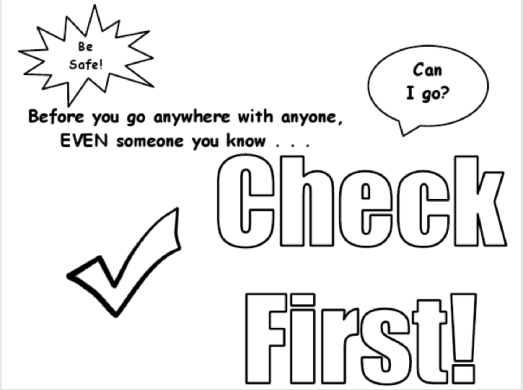
Scoop highlights the skills that kids need to be safe through a gentle story about a girl talking with her mom about being safe. One thing that I especially like about Scoop is that it covers stranger safety skills while acknowledging that “scoopers” aren’t only strangers – they can also be people that kids know and like. To further emphasize this unfortunate truth, I add to the information in the book by telling the kids that kids are more often hurt by people they know than people they don’t know. I point out that in the pictures of a man coming to the door and of a woman with a puppy, that they could be people the girl knows or they could be strangers. The book ends with the narrator realizing that she herself had been a “scooper” when she tried to turn the bunny she found in her yard into a pet. This provides a good opening for further discussion about how “scoopers” could be anyone.
Lesson 2 specifically focuses on safety related to private parts: the importance of telling if someone touches you or has you touch them in a way that makes you feel uncomfortable, or asks you to keep a secret about touching. The lesson concludes with students identifying adults they can trust to help them. Activities include reading I Said No! and filling out and coloring a My Green Flag People: Adults I Can Trust to Talk to About Hard Things paper on which kids identify 5 adults (at least two at school and two outside of school) who they can talk to about hard things.
I Said No! was written by a teacher/mom and her son, Zack, who had an uncomfortable experience at a sleepover. He used a great strategy to “show ‘no'” and avoid inappropriate touching, but had been unprepared for the lies, intimidation, and threats directed toward him. Writing the book to help other kids know what to do in similar situations helped him feel better. I Said No! is a fairly long book, and it covers some of what we have already covered in Lesson 1, so I don’t read every page, but I make sure to read all the pages and examples of “red flag” (unsafe) people to help reinforce the importance of the No (if you can), Go, and Tell concept that was covered in Lesson 1. One thing that I especially like about I Said No! is that it clearly describes “tricks” that abusers might use – lies, threats, bribes – and shows how kids should respond to keep themselves safe. Despite the repetition of uncomfortable or potentially dangerous situations, the book is very reassuring and not at all scary, and includes examples of “green flag” (safe and trusted) adults. Here is the paper the kids fill out and color (in green, of course!) after we read the book.
Lesson 3 gives students a chance to practice telling an adult about unsafe situations. We begin by reviewing the concept that sexual abuse/unsafe touching is NEVER the kid’s fault. Using the “Sexual (or Physical) Abuse is Not Your Fault” scenarios listed in Teaching Kids How to Tell About Sexual Abuse, I ask the kids, “Is it the kid’s fault if . . . ” Inevitably, some second graders will say “Yes,” to some of the scenarios, which gives a great opportunity to correct misunderstandings and to underscore the fact that it is never a kid’s fault. Eventually the kids figure out that the response to all of the questions about fault is “No.” Once they’ve realized that, I go back through the scenarios, and have the kids respond “No!” as a group to each one.
Then the kids practice telling an adult (me or the teacher) that something unsafe has happened. Using the “No Secrets About Touching” scenarios from Teaching Kids How to Tell About Sexual Abuse, I give a role play situation to each student, who then decides to tell either me or any other adult who happens to be in the classroom. I (or the other adult) respond with, “I’m sorry that happened to you. You were very brave to tell me. I’m going to get help so you will be safe.” If there is another adult in the room, I (or the other adult) will occasionally respond with something like, “I’m too busy right now,” or “I don’t believe you,” so that the student has to go to the other adult to tell. This reinforces the idea that kids have to keep telling if an adult doesn’t do something to help make the abuse stop. To end the lesson, the kids draw a picture of themselves telling a trusted adult about an unsafe situation and color a “Your Body Belongs to You” paper, both from the Very Important People Coloring Book.
Objectives and ASCA Standards
Objectives: Students will be able to:
- understand that “uh-oh” or “yucky” feelings are a warning that a situation is unsafe.
- understand that their body belongs to them and they have the right to say who may touch it.
- understand how to avoid and refuse uncomfortable touches.
- understand that uncomfortable touches demanded by another person are not their fault.
- demonstrate how to tell an adult about any uncomfortable touch, unsafe secrets, tricks, or threats.
- demonstrate how to tell another adult if an adult you tell about uncomfortable touches does not help you.
- identify adults that they can trust to talk to about uncomfortable or unsafe things.
ASCA National Standards
PS:A1.7 recognize personal boundaries, rights, and privacy needs
PS:A2.6 use effective communications skills
PS:B1.4 develop effective coping skills for dealing with problems
PS:B1.5 demonstrate when, where and how to seek help for solving problems and making decisions
PS:C1.3 learn about the differences between appropriate and inappropriate physical contact
PS:C1.4 demonstrate the ability to set boundaries, rights and personal privacy
PS:C1.6 identify resource people in the school and community, and know how to seek their help
You might also be interested in:
First Grade Lessons for Sexual Abuse Prevention
Kindergarten Lessons for Sexual Abuse Prevention
A Collection of Sexual Abuse Prevention Resources

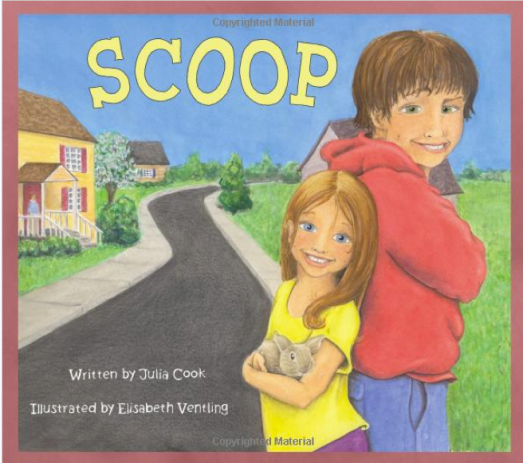
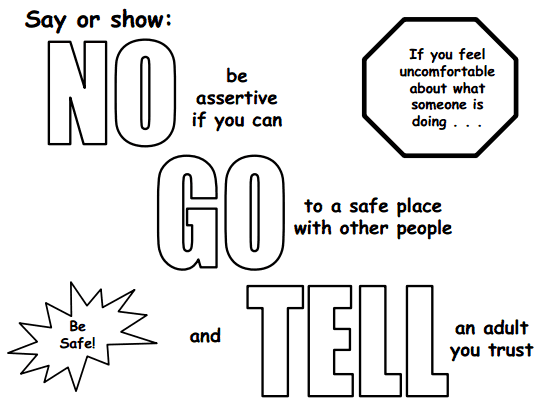
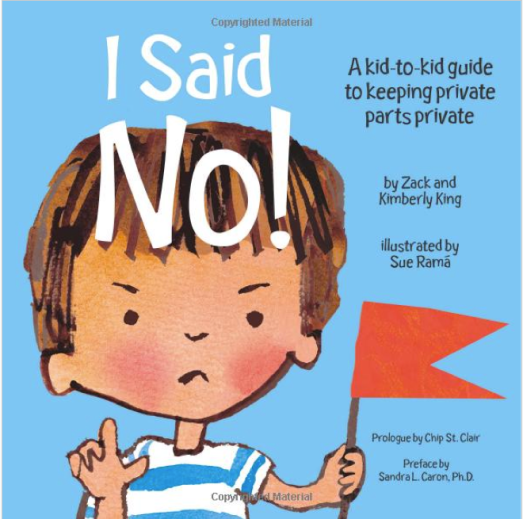
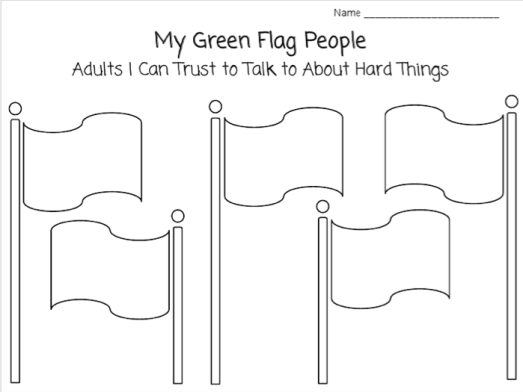
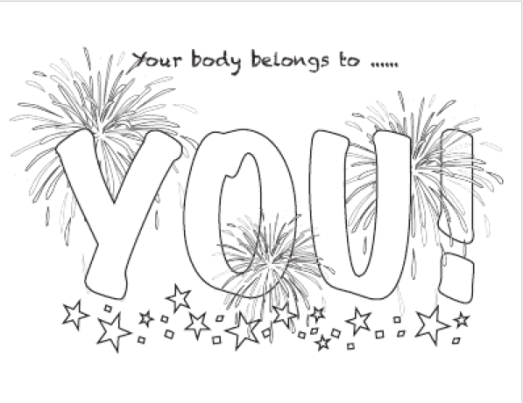
Thank you so much for your lessons that you share on your blog. I can’t tell you how much I appreciate everything you post and share. As a first year school counselor, I have been able to use many of your ideas and lessons!!
You are very welcome, Jennifer. I’m glad my posts are helpful. I remember how hard it was to start out with essentially nothing, back in the days when there wasn’t the opportunity (or technology) to share like we can too. I love being able to share and I love everything I learn from other bloggers!